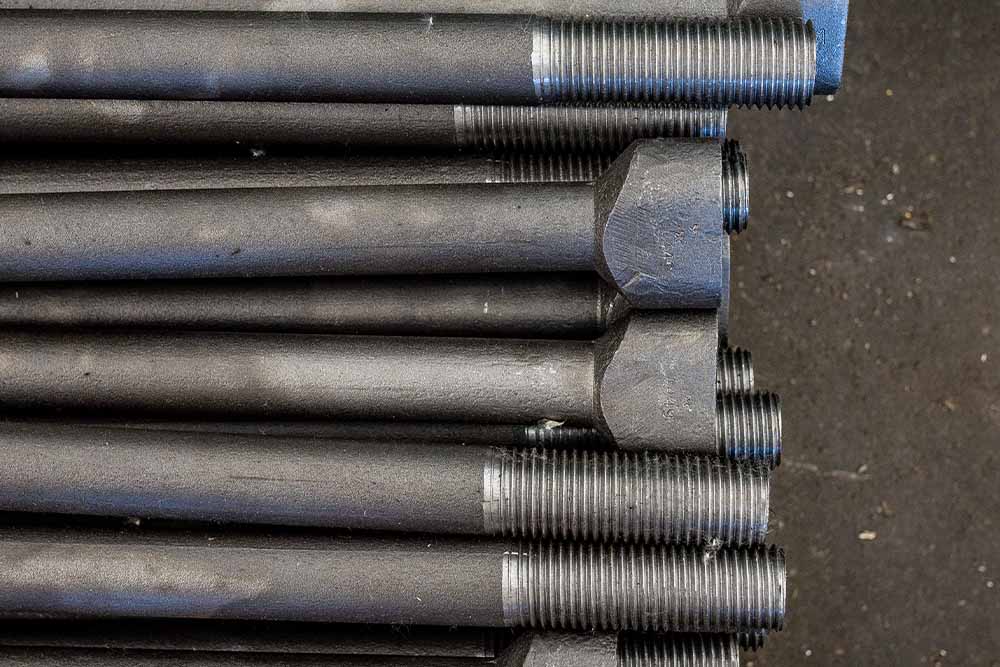There is plenty of debate around rolled threads vs cut threads on fasteners. Many argue that rolled threads are best. While we mostly agree, that is not always the case. There are plenty of times when cut threads are a good match for the needs of a project. That begs the question, “When do you need rolled threads vs cut threads?”
Let’s explore these two threading methods so that you can make educated decisions when sourcing fasteners for industrial projects.
What Are Rolled Threads?
Thread rolling is a popular method for making fastener threads. How does it work? It involves forming threads by putting direct pressure on a threaded blank, which is a cylindrical piece of metal with a screw or bolt head.
Thread rolling can be done using either dies or plates. Dies are cylindrical, and plates are flat, but both devices apply threads in a similar way. In both instances, the blank is placed in between the dies or plates. The blank is then “rolled” against the dies. This process is completed cold, meaning the blank is not heated before rolling.
Thread rolling creates threads without removing or cutting away material, resulting in a consistent thread pitch. It also keeps the strength of the metal blank.
What Are Cut Threads?
This type of threading is made by cutting or removing material from the blank. Thread cutting can be performed by using a die or a single-point tool.
Cutting dies spin around the fastener blank. With each rotation, the die works itself down the body of the blank. When using the single-point method, the blank is held in a unique vise. The tool is then pressed into the blank while the vise spins it.
Since thread cutting involves removing material, the blanks used in this process are thicker. This process requires the use of more materials to create the blanks. Naturally, more material means a higher cost-per-unit. The cutting process can also affect the strength of the fastener, which is why rolled threads are often considered better than cut ones.
Heat Treatments: The Great Equalizer
Typically, rolled thread and cut threads are created using cold processes. In this scenario, a rolled thread is much stronger. But what if you apply heat?
Heat is a great balancer, at least when it comes to threading fasteners. When blanks are heat treated during threading, rolled and cut thread fasteners show equal strength.
However, heating also increases costs, so heat-treating should only be added to the process if your planned use requires it. If cold-worked fasteners meet your needs, they are the less costly approach.
Rolled Threads vs Cut Threads: Benefits of Each Method
Both threading methods can make quality fasteners. Modern cutting tools can create fasteners with rounded root radii, which increases the fatigue resistance of the fastener and makes it more comparable to rolled thread options.
When heat treatment and modern tools are used, both processes exhibit near-equal strength, so what are the actual benefits of each method?
Like most manufacturing processes, the debate of rolled threads vs. cut threads comes down to cost.
- Thread rolling is the most cost-effective choice when making a large volume of fasteners.
- Thread cutting is cheaper when serving a low order volume.
To roll thread, dies must be created. The costs of creating dies are canceled out when making a large batch, but die creation can drive up order costs when you only need a small order.
Thread cutting can be performed with an adjustable vise and single-point tool, so no custom dies are needed. This process keeps equipment costs down, but cutting involves removing material. The material waste associated with cutting one fastener is negligible, but if cutting 10,000 units, this waste results in added costs.
The Decision: How to Choose a Thread Type
When choosing a thread type, your primary concern should be how many units you need. Dyson Corp. can provide cost comparisons for each option so that you can make an informed decision.
Other factors that impact cost include fastener diameter and finish. The material will also play a role in your total order cost.
While threading methods are an essential choice for selecting fasteners, there are other variables you need to be aware of. It would be best to be mindful of the finish and material differences.
If you need help choosing fasteners for your project, call us at 1-800-680-3600. We can assist with fastener design and provide you with a custom quote for your next order.
